WEEK 18 - MAYS GO BY (way too fast)
Some months seem to drag, and I find myself wishing time would speed up so the next season would arrive sooner. May, on the other hand, is a month that I wish I could stretch out over two or three months. It's already half over, and I feel like I've barely scratched the surface of what I hope to get done. It's like that every year.
First, I have a number of flowering trees in my yard, including apple, pear and crabapple. I always try to get pictures of birds either feeding or perched in the trees while they're in full bloom. A few years ago I had several Baltimore Orioles and a pair of Orchard Orioles feeding on the blossoms for days and got lots of pictures. Every year since then, the timing has been off, and either the blossoms came out early and the birds had not returned yet, or, the birds returned later than usual, like this year. I did have a brief visit by a first year Orchard Oriole this year, but got no pictures and just got a few of this young Baltimore Oriole feeding in the apple tree.

Fortunately, there were plenty of colorful feeder birds to fill the void, like American Golfinch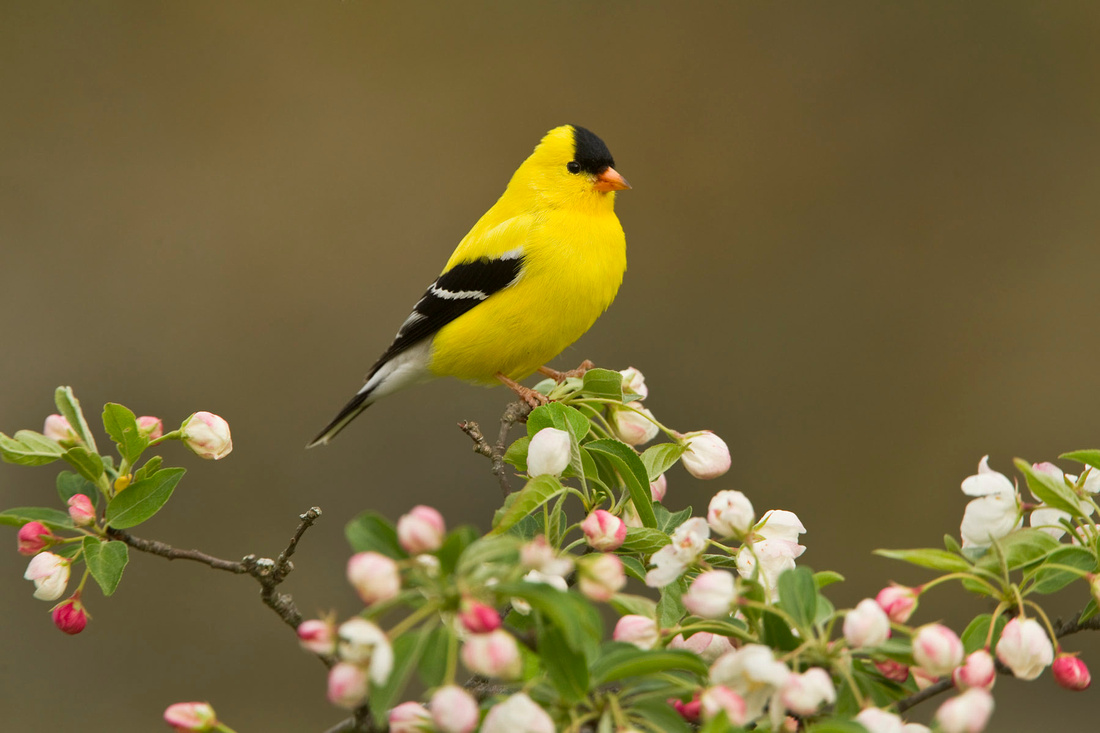

and Northern Cardinal.

Keeping the feeders out in the spring is a mixed blessing, as I also attract hordes of House Sparrows, Brown-headed Cowbirds, Red-winged Blackbirds and Common Grackles (pictured below), although they can be attractive in their own right.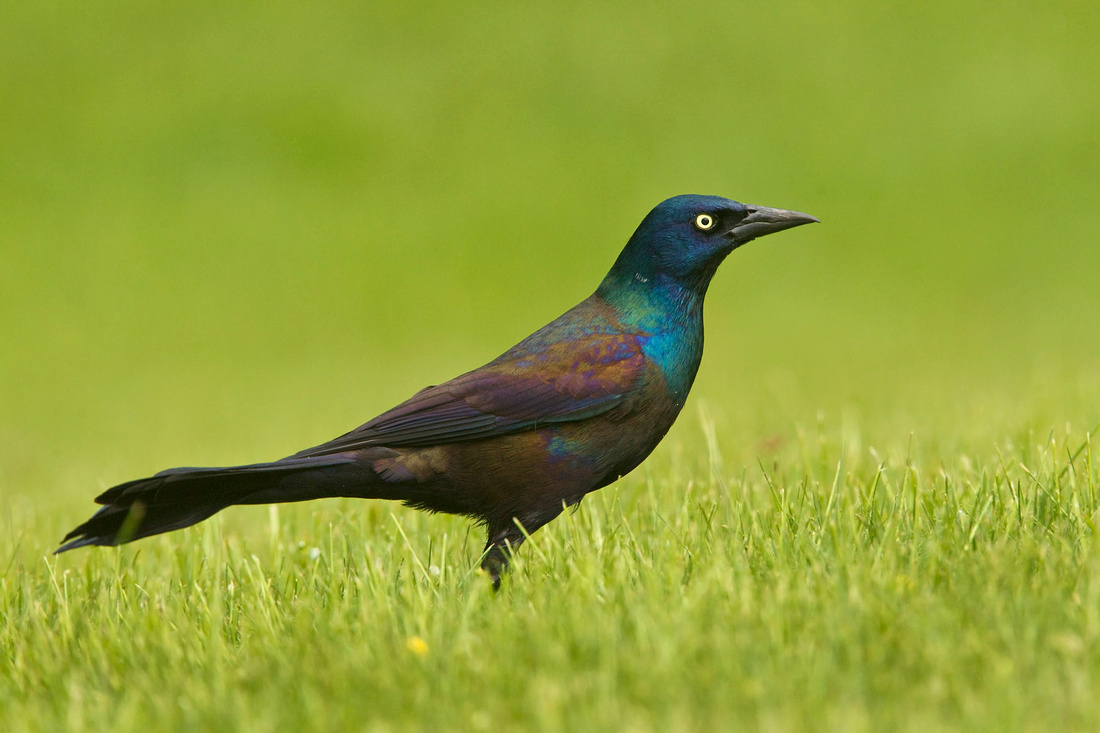

Beyond the "eye candy" at home, there are all the summer residents returning to their breeding territories. The optimal time to photograph these birds is when they first arrive and establish their territory. Once they have paired up and started nesting they are much less conspicuous. So the trick is to find the birds when they first arrive, and there are all different types of habitat to search. Along the shoreline, shorebirds and wading birds are the first targets. At Hammonasset, I photographed Glossy Ibis in the marsh,

Little Blue Heron in a salt pond,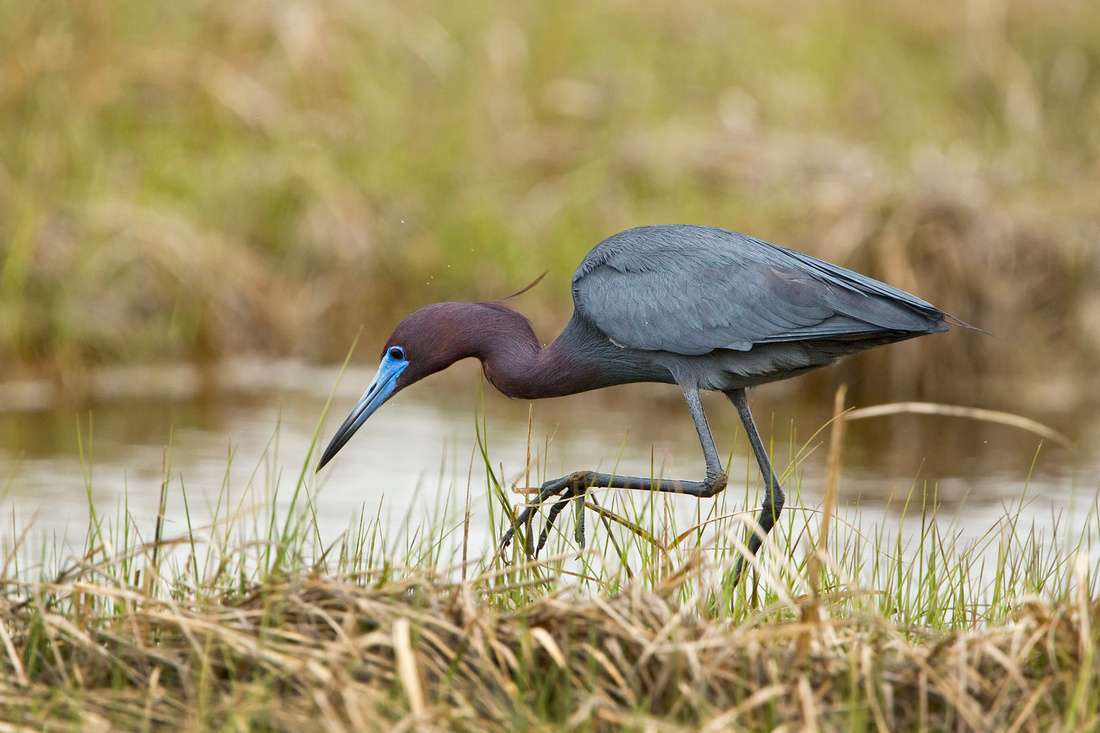
 and a late pair of migrating Northern Shovelers at the Swan Pond.
and a late pair of migrating Northern Shovelers at the Swan Pond.
 Inland, the subjects are even more varied. Along field and forest edges, a bounty of birds can be found. I try to visit power line cuts, like this one near Hartman Park in Lyme, for this type of habitat.
Inland, the subjects are even more varied. Along field and forest edges, a bounty of birds can be found. I try to visit power line cuts, like this one near Hartman Park in Lyme, for this type of habitat.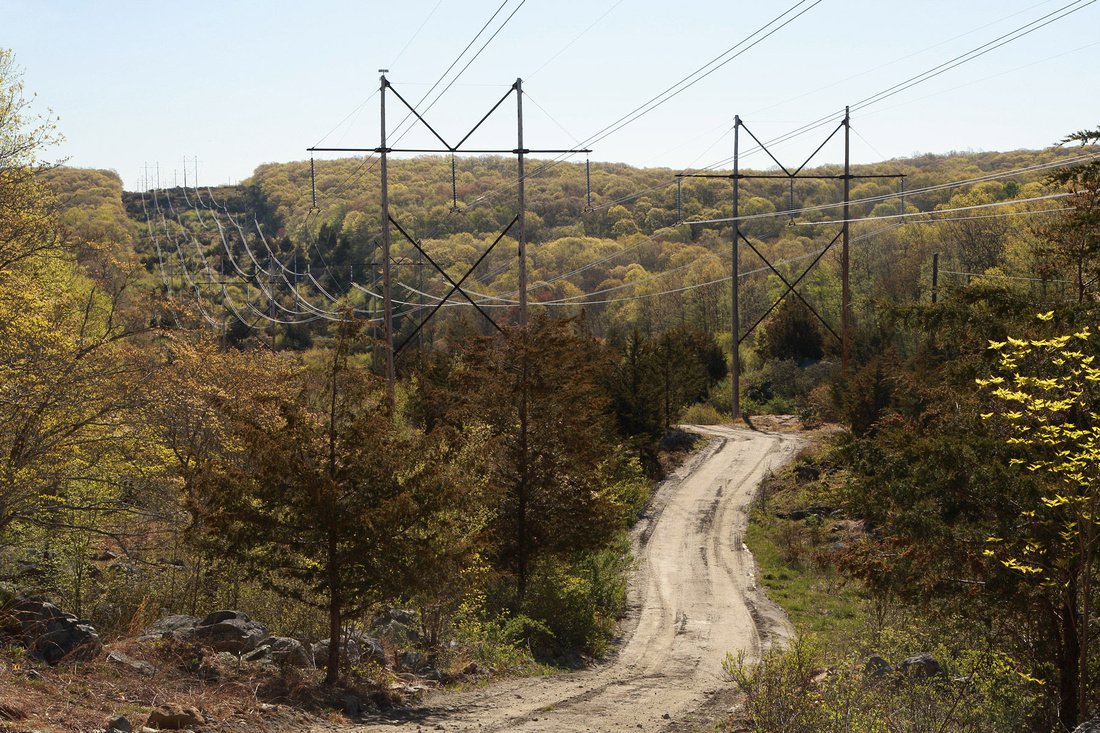
 Among the residents are buzzing warblers like this well disguised Prairie Warbler, who was singing from the top of a sapling,
Among the residents are buzzing warblers like this well disguised Prairie Warbler, who was singing from the top of a sapling,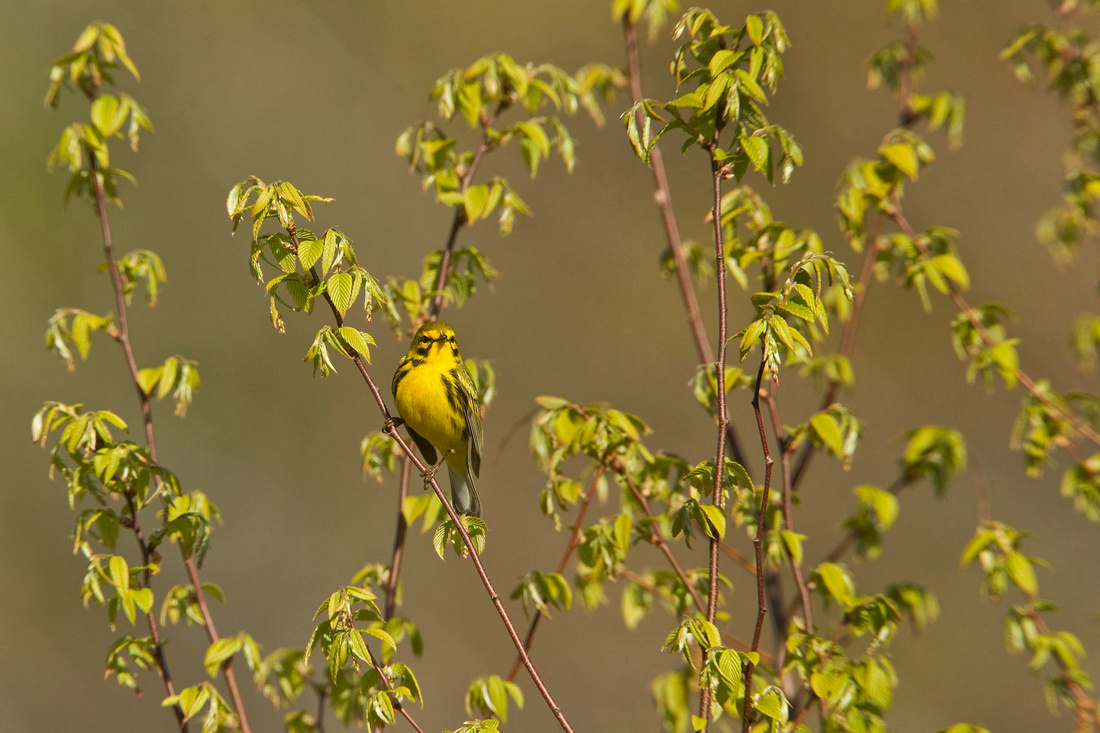
 and Blue-winged Warblers abound in the low shrubs and grasses.
and Blue-winged Warblers abound in the low shrubs and grasses.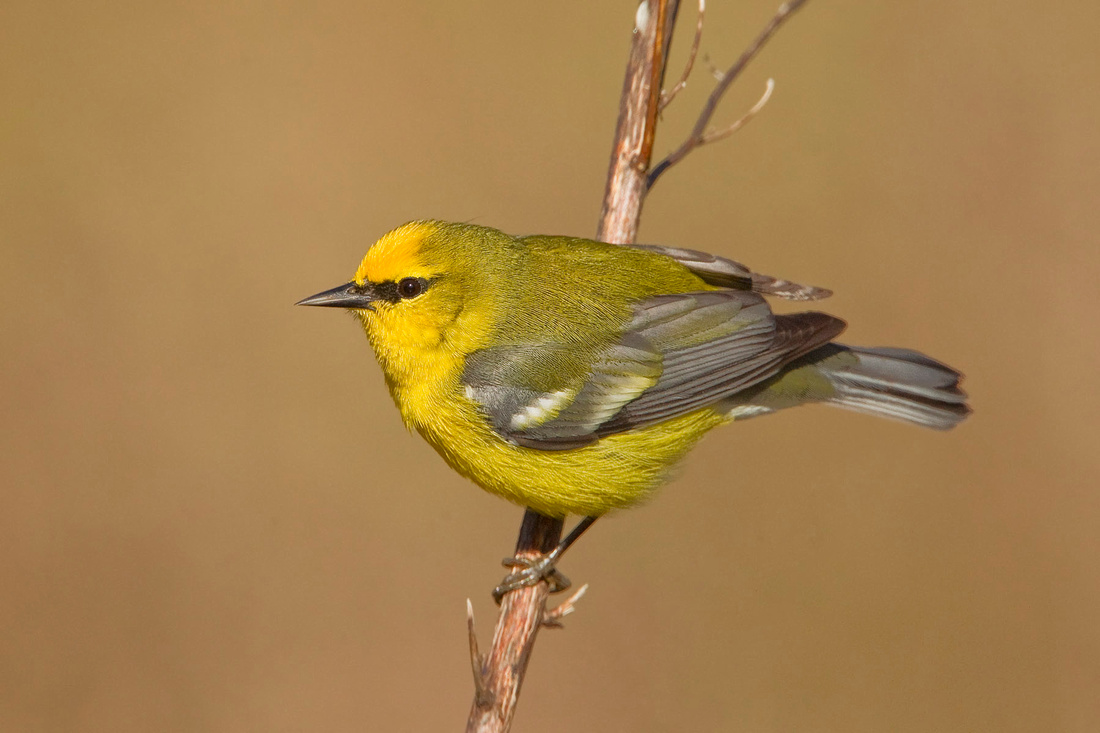
 In the woodlands, Baltimore Orioles sing and chatter noisily and are easy to find.
In the woodlands, Baltimore Orioles sing and chatter noisily and are easy to find.
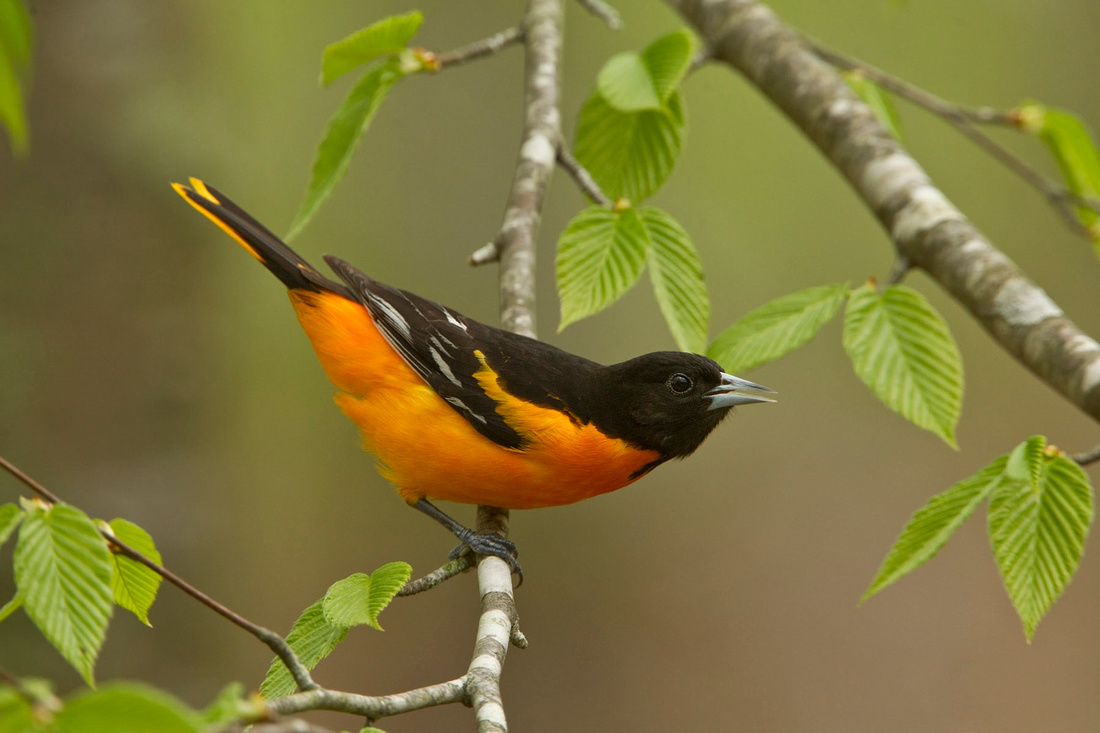
 and warblers, vireos, tanagers, flycatchers, grosbeaks and thrushes add their voices to the song-filled woods. Sometimes, migrants passing through can be found along with the residents. In Nehantic State Forest, a plain looking thrush I expected to be a Veery turned out to be a migrating Swainson's Thrush. Migrants are another exciting May target, which I'll cover more about in my next post.
and warblers, vireos, tanagers, flycatchers, grosbeaks and thrushes add their voices to the song-filled woods. Sometimes, migrants passing through can be found along with the residents. In Nehantic State Forest, a plain looking thrush I expected to be a Veery turned out to be a migrating Swainson's Thrush. Migrants are another exciting May target, which I'll cover more about in my next post.

As May draws to an end, I usually shift my focus to finding nests to photograph, but it's still early for that, or so I thought. While walking along a woodland stream on May 8, a small bird flew out from a few feet away from me and fluttered over the water. I had accidently flushed a Louisiana Waterthrush from its nest in some upturned roots. I could partially see the nest through the hanging root fibers, and what appeared to be a cup of brown speckled eggs. I quickly bent down to take a shot of the nest area and noticed a lightly speckled white egg in the water. The nest is marked by the top arrow and the egg by the lower.
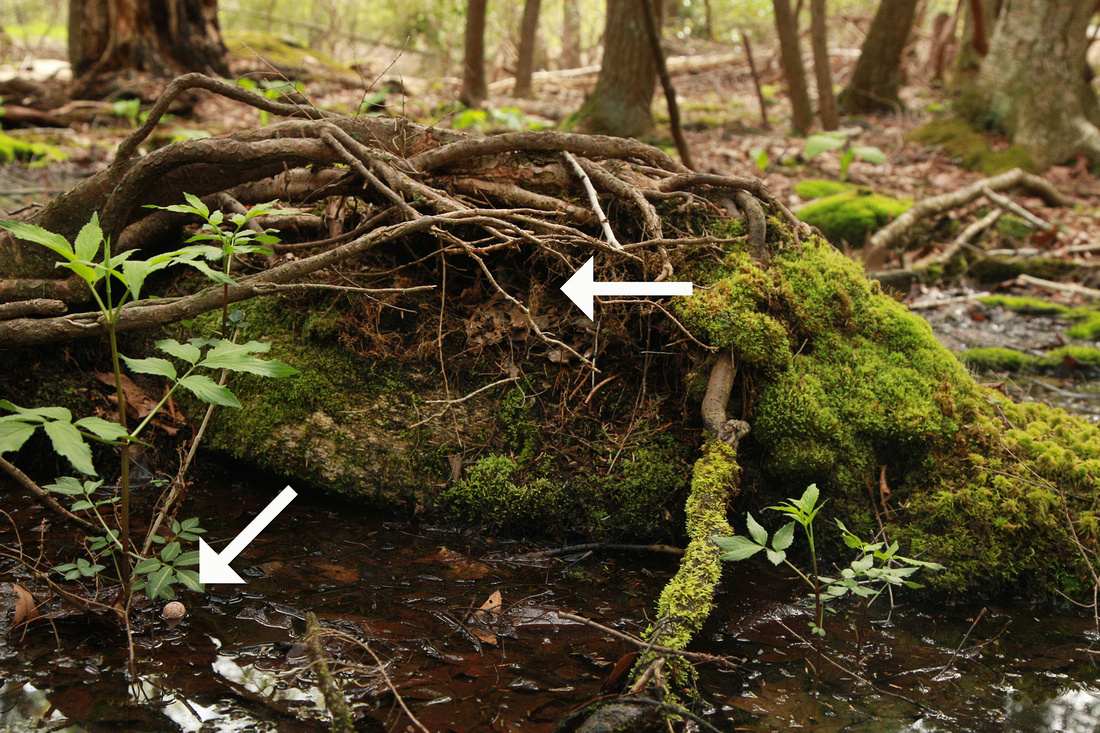

As I stood to leave, I saw another white egg at the edge of the stream, right at my feet.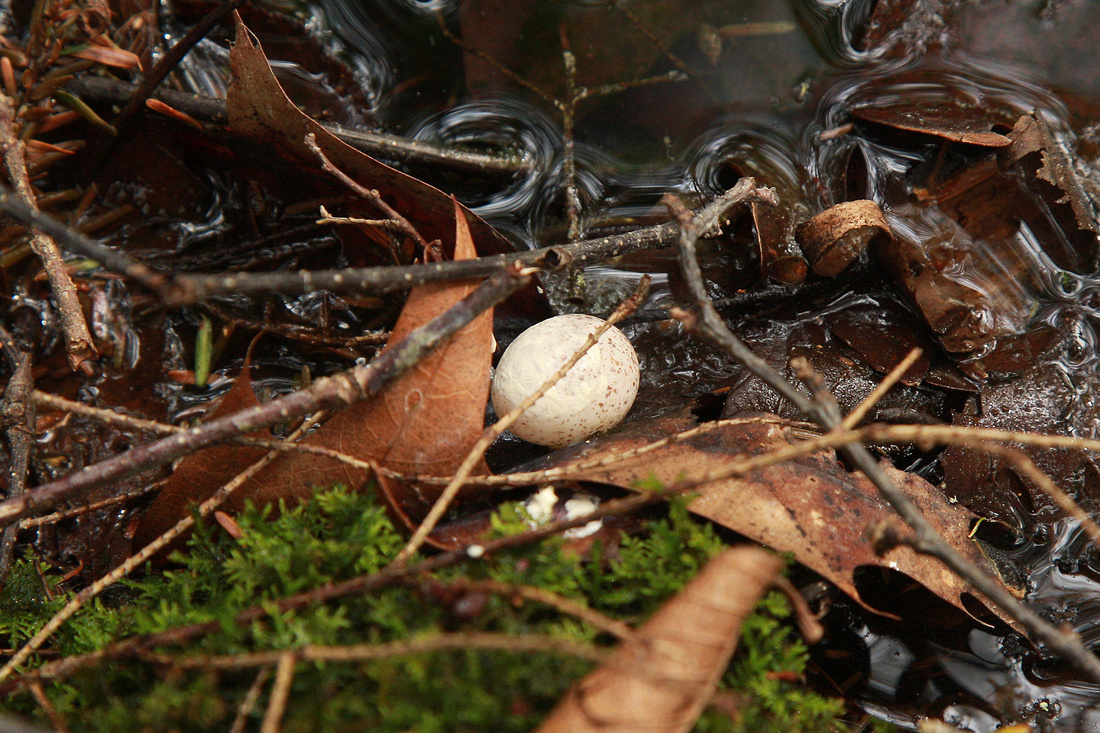

I quickly retreated and left the area. I feared that eggs were scattered by a Brown-headed Cowbirds that had parasitized the nest, since I heard them in the canopy above the stream. That night I looked up the eggs of waterthrush and cowbirds in a book I have, and my fears were confirmed. I generally do not try to photograph songbirds nesting while they are incubating, because of the risk of them abandoning their eggs. I may try to return in a couple weeks to see if chicks have hatched and if it's even possible to photograph the nest. Well downstream from the nest I continued my streamside search and found this Nursery Web Spider on a a skunk cabbage leaf.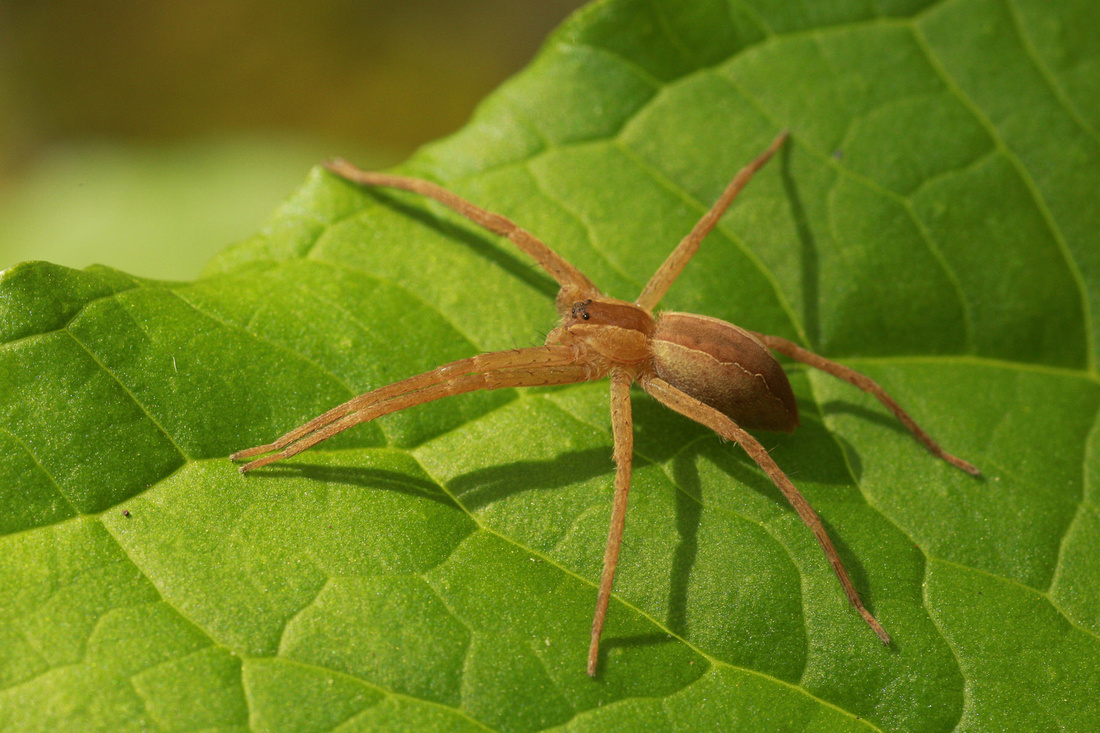

Perhaps the best find I had last week was a beautiful Eastern Box Turtle at the edge of a road in Lyme. I have never seen a box turtle in the wild, and they are growing increasingly rare in the state. I decided to move the turtle from the roadside since they are apparently hit by cars while crossing the road a lot (there were several controversial turtle crossing stories while I worked at the Hartford Courant). After a brief photo shoot, I placed the turtle about 20 feet off the road in the direction it was pointed when I found it. I hope that keeps it safe.
